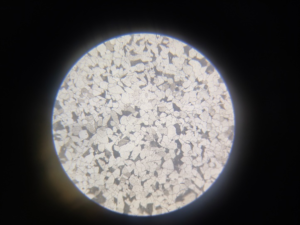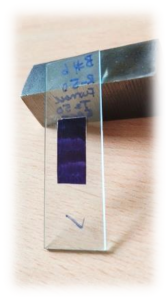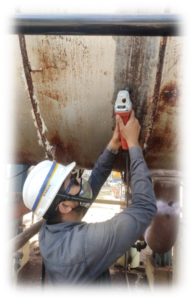In-Situ Metallography (Replica)
In-situ metallography (Field Replica test)
Metallography is one of the metallurgist’s most valuable tools.
Metallography is as much an art as a science. The artistry lies in the techniques used to prepare a specimen–sectioning, mounting, grinding, polishing, and etching–and to photograph a specimen. When properly carried out, these techniques result in a micrograph that is both a true representation of the microstructure of a material and a beautifully executed photograph.

In-situ metallography (Field replica) why?
Various Non-Destructive Testing Methods are carried out on operating plants for many reasons like, condition assessment, life assessment to avoid failure and for safe and reliable operations. Due to critical assessment requirement of plant components, microstructural evaluation of the component has become powerful tool. Earlier metallography was conducted by destructive means where it was required to cut-remove the sample and it was done in laboratory. But with advancement in the technology and development of portable equipment the process of In-situ- metallography (Field Replica) is converted into Non-Destructive method. Hence, it is possible to monitor periodically the response in degradation vis-à-vis operating conditions.
Pressure and temperature plays an important role in degradation mechanism for alloys like plain carbon, medium carbon and high alloy steels used in different process plant application. Principally, addition of alloying elements increases ability to withstand severe process demands by generating proper metallurgical conditions in an alloy. Hence the Microstructure plays an important role in controlling properties like, Mechanical, Metallurgical, Physical and Corrosion of an alloy. Controlled microstructure is a result of the metallurgical process, component had undergone. When microstructure is exposed to high pressure-high temperature it degrades.
Microstructure responses to the high temperature-high pressure and various operating abuses like thermal fatigue, process up-sets and high temperature corrosions can be recorded by in-situ metallography. If it is properly applied can produce valuable data by which forced outages can be avoided.
Location selection of in-situ metallography is of paramount importance as it decides the condition of the plant components. Location selection is done by understanding criticality of components in operation and failure history of the equipment. It should be representative of the most affected area from the operational condition by anticipated damage mechanisms.
In-situ metallography, how?
The technique of in situ metallography involves location selection, mechanical grinding & polishing / electrolytic polishing, electrolytic etching or chemical etching, replication along with the observation and also directly taken the micro structural images at the Spot on time.
The kit of in-situ metallography comprises of portable grinder, light grinder with variable speed controller, electrolytic etcher/polisher, microscope and variety of consumables. The consumables can be listed as self-adhesive polishing papers of different grit size, self-adhesive velvet cloth, solvents, water bottles, diamond paste, and suspended alumina, electrolytes and replica films.
Location selection, where?
The location is selected on the basis of a careful analysis of the involved components.
Because of the local nature of replica inspection, the selected position must be most critically Representative one in the anticipated damage mechanism.
There are two types of considerations mentioned hereunder:
Mechanical consideration, where parameters like stress, vibrations, bends, weld / HAZ and stress generated from due to self-weight of components in addition to the operating stresses.
Process considerations; where parameters like Temperature, Pressure, Flow rate and reaction with the environment are taken in to account.
Some major applications of in-situ-metallography (Field replica)
Damage mechanisms that are detected through microstructure studies:
Graphitization I Degradation of pearlite I Creep damage I Thermal fatigue I Hydrogen attack I
Sensitization
Some major equipment’s and areas,
Critical components/ equipment’s like pressure vessel, boiler tube, reformer tube, process pipe, reactor, column, heat exchanger which are operating under highly temperature & high pressure in area such as a refinery, oil & gas plant, power plant, chemical plant, petro-chemical plant etc
In-situ replication/ metallography process parameters





Our Other Services
- Rebound Hammer
- Ultrasonic Pulse Velocity
- Half Cell Potentials
- Concrete Core
- Carbonation
- Cover Meter Survey
- Pile Integrity Test
- Pile Dynamic Test
- Bridge Load Test
- Slab Load Test
- Cross Hole Sonic Test
- In-Situ Metallography (Replica)
- Portable Hardness Test (Rebound & UCI Method)
- Expert Metallurgy Consultant For Site
- Pressure Vessel Inspection & Maintenance
- Condition Assessment
- Remaining Life Assessment
- Fitness For Service
- Pipeline Inspection & Maintenance
- Tank Inspection & Maintenance
- IBR/Non IBR Fabrication
- Structural Health Assessment / Structure Audit
- Reactor Inspection As Per Factory Act





